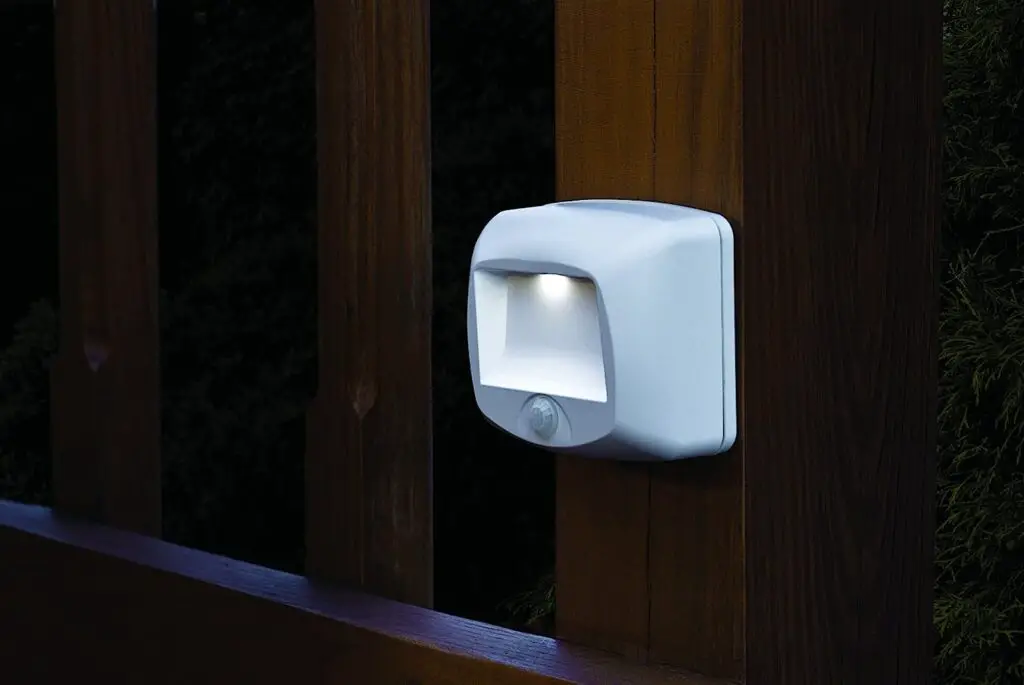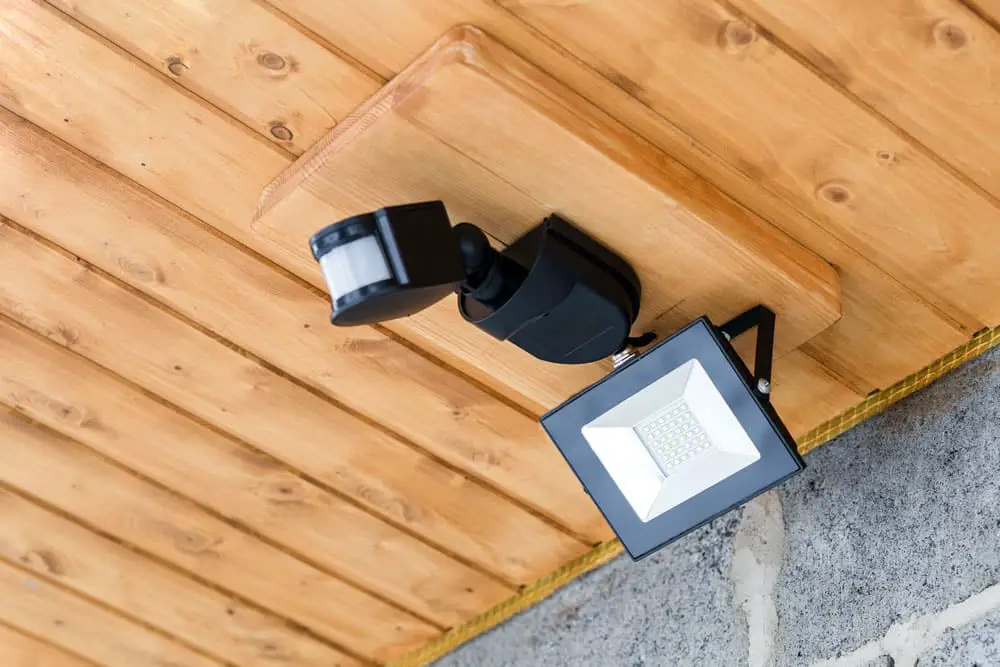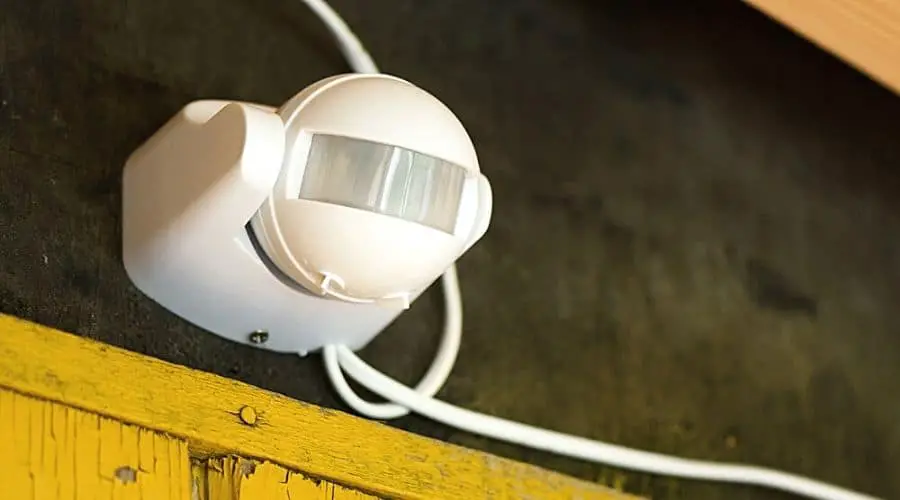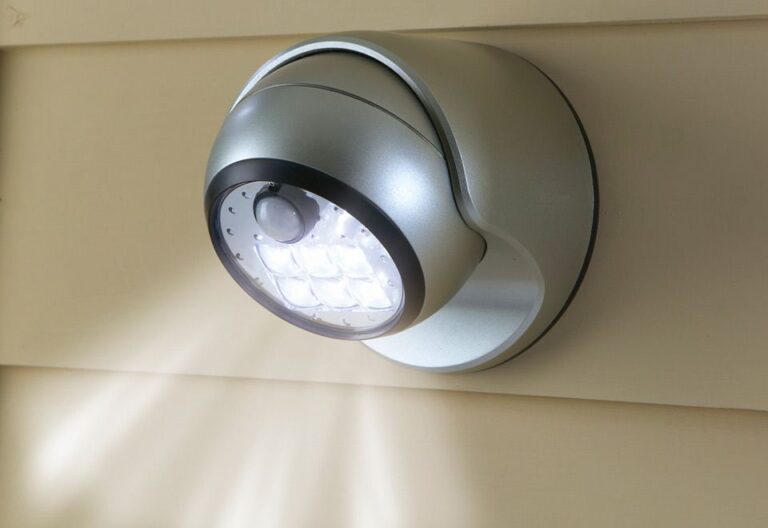Introduction
Do Motion Sensor Lights Save Energy: In an era where energy efficiency is a top priority, motion sensor lights have emerged as a popular solution for saving energy in both residential and commercial settings. These lights are designed to automatically turn on when motion is detected and switch off when the area is unoccupied. This intelligent feature helps eliminate energy waste by ensuring that lights are only active when needed, leading to significant energy savings over time.
One of the primary advantages of motion sensor lights is their ability to prevent lights from being left on unnecessarily. In many instances, people may forget to turn off lights when leaving a room or area, leading to wasted energy. Motion sensor lights solve this. Lights are only turned on when people are nearby since the sensors detect movement within their range. This feature is useful in corridors, bathrooms, and outdoor spaces with sporadic or unexpected occupancy.

Motion sensor lights are great for outdoor security and energy savings. Even in quiet areas, traditional exterior lights often stay on all night. Motion sensor lights only turn on when a person or car passes by. Limiting operating length saves energy and money with these lights. The abrupt activation of bright lights upon motion detection can also dissuade burglars, improving security.
Does motion sensor light bulbs save energy?
They are energy efficient, secure, convenient, and cost-effective. Indoor and outdoor motion sensors can improve illumination, safety, and cost savings.
Motion sensor light bulbs can indeed save energy when compared to traditional light bulbs that stay on continuously. These specialized bulbs are equipped with motion sensors that detect movement within their range and automatically turn on the light. When there’s no motion detected, they will either dim or switch off the light after a certain period, depending on the model and settings.
The key advantage of motion sensor light bulbs is that they prevent unnecessary energy consumption during periods when there is no one in the area. In traditional setups, lights might be left on inadvertently, wasting electricity and money. With motion sensors, the lights only activate when needed, reducing energy usage and subsequently lowering electricity bills.
Additionally, motion sensor light bulbs can enhance safety and security. They illuminate pathways, entrances, and other areas when someone approaches, providing a sense of security and deterring potential intruders.
How much energy do motion sensor lights save?
Sure enough, the use of motion sensors in commercial buildings can apparently lower energy usage by as much as 30 per cent.
Movement sensor lights save energy compared to regular lighting. These lights only turn on when they detect movement and turn off after a predetermined time. This feature decreases lights electricity use and energy waste.
Motion sensor light energy savings can vary based on a variety of variables, including the quantity of installed lights, how long they operate, the type of lighting technology (LED, CFL, etc.), and the normal lighting patterns in the region.
Studies show motion sensor lights save 50% to 80% of energy compared to continuous lighting. This huge electricity usage reduction reduces greenhouse gas emissions and saves homes’ and businesses’ utility bills.
How much money do motion sensors save?
A study on the energy savings potential of lighting controls in commercial buildings found that daylighting control schemes can save, on average, 30% of the energy used (ACEEE), as well as, on average, between 13 and 90% of lighting energy expenses (Graybar). Motion sensor controls offer a wide range of potential energy savings.
By optimizing energy use and operational costs, motion sensors can save money. These devices are often used in homes, companies, and industrial buildings to detect activity and activate lights, heating, cooling, and security.
Motion sensors are quite important for cutting down on energy waste. For instance, in homes, lights are frequently left on even when rooms are not in use.
What is the advantage of outdoor motion sensor lights?
Not always on saves energy: These lights only activate when someone enters the motion sensor range. This means you don’t have to turn them on and off like regular outdoor lights.
Outdoor motion sensor lights offer several advantages that make them a popular choice for homeowners and businesses alike. The primary benefits of these lights include enhanced security, energy efficiency, and convenience.
First and foremost, outdoor motion sensor lights significantly improve security. They act as a deterrent to potential intruders and trespassers. When someone approaches your property, the sudden illumination startles them and draws attention to their presence, discouraging criminal activity. Moreover, the lights can be strategically placed around entry points, pathways, and dark corners, providing better visibility and reducing the likelihood of accidents.
Another benefit is energy efficiency. Motion sensor lights only turn on when motion is detected, unlike standard outdoor lights. This smart feature prevents energy consumption from unnecessary lighting. Energy bills drop and environmental effect decreases.
Are motion sensor lights worth it?
Are Motion Sensor Lights Worth It? Motion sensor lights have the potential to conserve energy and save you from high electrical bills. Since the light is not generating power for the duration of the entire night, but only when necessary, it does not constantly draw on your electrical system.
Motion sensor lights can be a valuable addition to your home or property, offering numerous benefits that make them worth considering. These lights are designed to detect movement, automatically turning on when someone approaches and turning off after a set period of inactivity. Here’s why motion sensor lights are worth it:
Enhanced Security
Motion sensor lights act as a deterrent to potential intruders, as they illuminate unexpected movement, making it less likely for criminals to approach your property undetected.
Energy Efficiency
Unlike traditional outdoor lights that stay on constantly, motion sensor lights only activate when needed. This significantly reduces energy consumption and can lead to cost savings on your electricity bill.
Convenience and Safety
Motion sensor lights provide an added level of convenience, especially when coming home in the dark. They ensure a well-lit pathway, reducing the risk of tripping or stumbling.
Extended Bulb Life
Since motion sensor lights are not continuously on, the bulbs tend to last longer, reducing maintenance costs.
Customizable Settings
Many motion sensor lights come with adjustable sensitivity and timer settings, allowing you to tailor them to your specific needs and preferences.
Wildlife Protection
If you have a garden or care about local wildlife, motion sensor lights can help reduce light pollution, minimizing disruption to nocturnal animals.

How long should a motion sensor light stay on?
Your motion sensor light stays on. These lights are designed to go off after movement has ceased, generally within 30 to 60 seconds. If your motion sensor light won’t go off or stays on for long periods of time, it may require a reset.
The duration for which a motion sensor light should stay on depends on various factors, including its intended purpose, location, and user preferences. Motion sensor lights activate only when motion is detected, improving security and energy efficiency. Here are some considerations to determine the appropriate duration:
Security
For security purposes, it is advisable to set the motion sensor light to stay on for a sufficient amount of time to allow safe passage or identification of potential threats. A duration of 1 to 5 minutes is commonly recommended.
Energy Efficiency
Energy-saving shorter periods are chosen. For busy regions, set between 30 seconds and 1 minute.
Location
The location of the motion sensor light influences the required duration. Lights in high-traffic areas may need shorter intervals, while those in less-frequented regions may benefit from longer durations.
User Convenience
Some motion sensor lights are adjustable, allowing users to customize the duration to their liking or specific needs.
Sensitivity
Ensuring the sensor’s sensitivity is appropriately calibrated can prevent unnecessary activations and, consequently, excessive lighting periods.
Ultimately, finding the right balance between security, convenience, and energy conservation is crucial. Regular evaluation and adjustment of the settings based on usage patterns and changing needs will help optimize the motion sensor light’s effectiveness.
What is the difference between light sensor and motion sensor?
Movement and Motion Sensors. Photocells and motion sensors differ in the way they trigger lights to turn on. Photocells detect changes in light levels and react accordingly. Motion sensors respond to any physical movement within their range.
Light sensors and motion sensors are both types of sensors used in various applications, but they serve different purposes and operate on distinct principles.
Photo sensors and photoresistors sense light. It measures light intensity and reacts to illumination. Auto lighting systems, photography gear, and gadgets that adjust screen brightness based on ambient light use light sensors. They save energy by turning off lights when natural light is enough.
Motion detectors, on the other hand, detect movement within their sensing range. It sends microwaves, infrared radiation, or sound waves and measures their reflection off an object. Security systems, automatic doors, and lighting systems employ motion sensors to switch on when someone arrives and off when no one is there, improving safety and energy economy.
How many motion sensors do I need?
This will depend on the size of your living areas. Most homes usually benefit from having at least three motion sensors, but you may find you require more or less depending on your layout.
The number of motion sensors you need depends on the size of the area you want to monitor, the places you want to cover, and your security or automation system’s sensitivity. One size doesn’t fit all, but I can offer some broad ideas to assist you choose the right amount of motion sensors:
Area Size
Consider the square footage of the area you want to cover. Larger spaces may require more sensors to ensure comprehensive coverage.
Entry Points
Focus on entrances like doors, windows, and garage openings, as they are common points of entry for potential intruders. Ensure each entry point is covered by at least one sensor.
Blind Spots
Identify any blind spots in your area that could be used as potential hiding spots. Install additional motion sensors to cover these areas and minimize vulnerabilities.
Purpose
Determine the purpose of your motion sensors. If they are for security, you may need more sensors for comprehensive coverage. For automation or energy-saving purposes, fewer sensors might be sufficient.
Sensitivity and Overlapping
Adjust the sensitivity of the sensors to avoid false alarms. Also, consider overlapping sensor coverage for critical areas to ensure no movement goes undetected.
Budget
Keep your budget in mind, as more sensors will increase the overall cost of the system.
Before making a decision, visit a security or automation expert who can assess your demands and recommend the right number and location of motion sensors.

Conclusion
Because they only illuminate when motion is detected, motion sensor lights save electricity. This feature removes the need for lights to be on constantly, saving energy over time.
By automatically turning on and off based on motion, motion sensor lights prevent lights from being left on inadvertently, especially in areas where occupancy is intermittent or unpredictable. This feature is particularly beneficial in outdoor spaces, such as driveways, pathways, or gardens, where lights can remain inactive for long periods until motion is detected. As a result, motion sensor lights contribute to reducing unnecessary energy waste and lower electricity bills.
In addition to energy savings, motion sensor lights also offer enhanced security benefits. When installed in outdoor areas, they can deter potential intruders by activating bright lights upon detecting motion. This sudden illumination not only alerts homeowners or occupants but also startles and discourages trespassers, enhancing the overall security of the property.

